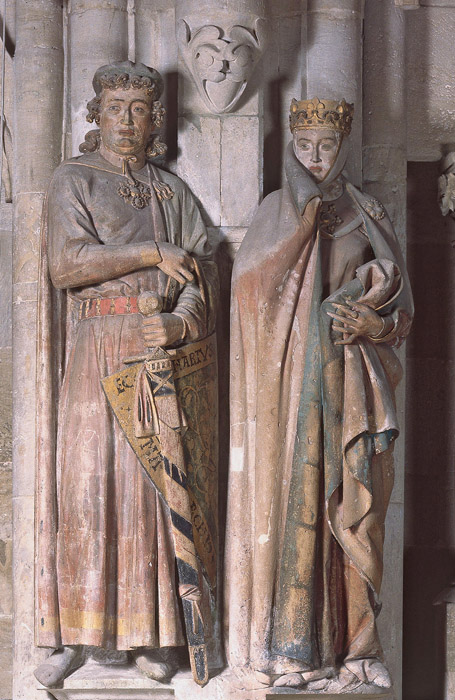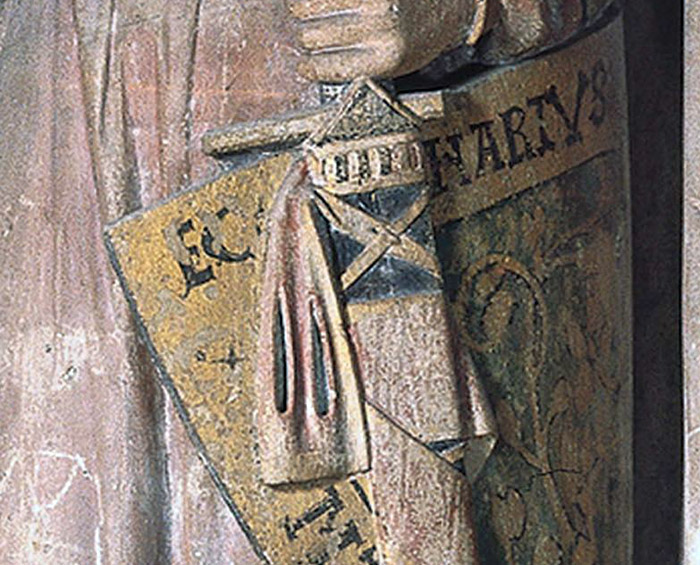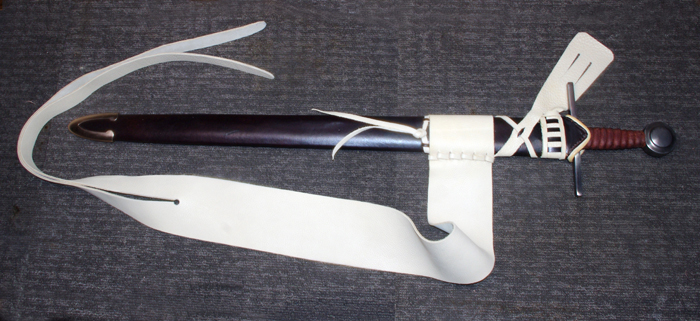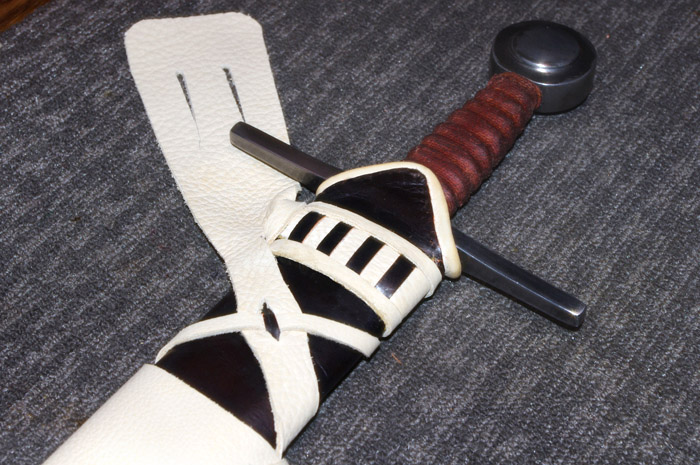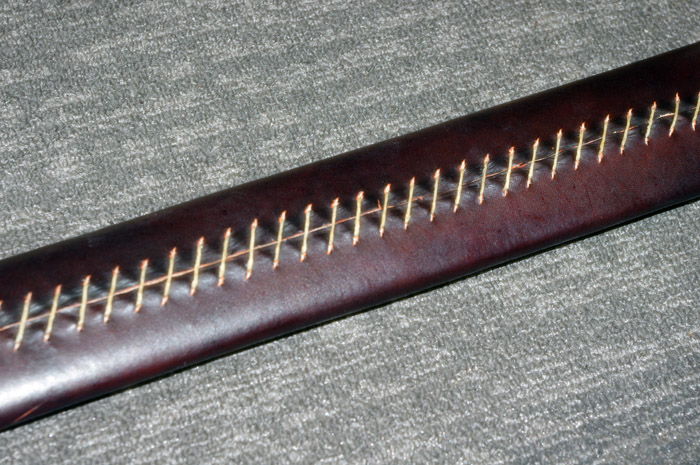The scabbards depicted at the Naumburg cathedral are interesting in that the thong belts are extremely wide - about 4 inches wide. There are depictions of similarly-wide thong belts in the illuminated manuscript Elisabethpsalter (folio 139 verso), Germany, circa AD 1200-1220, but later (13th-14th C) thong belts of the German Empire were a tad bit narrow than these monsters.
The other interesting point about the Naumburg scabbards is that they all have an offset sword belt. To the best of my knowledge and research, the offset sword belt was developed right around AD 1200 - and the earliest depiction that I can find of an offset sword belt is also depicted in folio 139 verso in Elisabethpsalter.
So perhaps these extremely wide thong belts represent the "first generation" of the offset sword belt.
Reproducing the Naumburg scabbard presented several of challenges, all of which I managed to solve through a lot of experimentation and failure.
The first challenge was to find a suitable leather for the thong belt. There is at least one other thread that addressed this question. Oakeshott described the leather as "buckskin" in Records of the Medieval Sword - and looking at the soft, cloth-like characteristics of thong belt leather one would tend to agree. However, buckskin stretches too much to be of any use for a sword belt. I used oil-tanned Latigo leather in a cream color and I believe this is perfect. It is slightly elastic but does not stretch, is very strong and has a very soft (almost chamois-like) feel.
The second challenge was reproducing the striking lacing pattern noted on the Naumburg scabbards. After many months of staring at photos of this lacing, I finally figured out how to reproduce the pattern. To perfect the technique I make a mock-up of a scabbard and did some hands-on experimentation (see the DIY Scabbard thread).
The third and most difficult challenge - one that no none has ever addressed that I can tell - is the piping that I have seen around the edges of triangular rain guards of the Naumburg (and other) scabbards. Days of experimentation and multiple failures finally produced a solution, albeit not an ideal one.
Anyway, here it is.
